History of Gurnard around Ireland and the British Isles
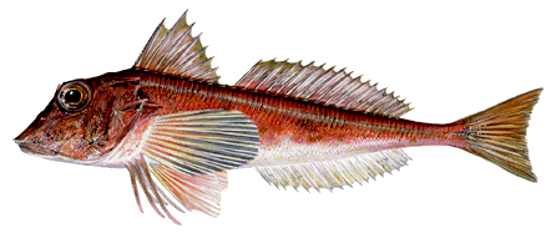 The red (Chelidonichthys cuculus) and grey gurnard (Eutrigla gurnardus) were most likely first described and classified by Francis Willughby and his friend and colleague John Ray in Willughby’s “De Historia Piscium libri quatuar” which was published in 1686. But only in 1758 was Chelidonichthys cuculus registered as the official name for red gurnard by the Swedish zoologist and botanist Carl Linnaeus.
The red (Chelidonichthys cuculus) and grey gurnard (Eutrigla gurnardus) were most likely first described and classified by Francis Willughby and his friend and colleague John Ray in Willughby’s “De Historia Piscium libri quatuar” which was published in 1686. But only in 1758 was Chelidonichthys cuculus registered as the official name for red gurnard by the Swedish zoologist and botanist Carl Linnaeus.
Gurnard has always had a negative reputation in the past, probably due to its looks rather than its taste.
Throughout history, the people across Europe felt the same way: trawlers catching gurnard in their nets tossed it back into the sea.
Until recently, the fish was slipped invisibly into Mediterranean fish stews, stocks or soups when used gastronomically. It was never a popular table fish and was most commonly used as crab or lobster pot bait. Some fishmongers put it up above their fish counter as ‘the flying fish’ with its bright colours to attract children. This was their way to get the mothers to buy the fish on offer at the fish counter.
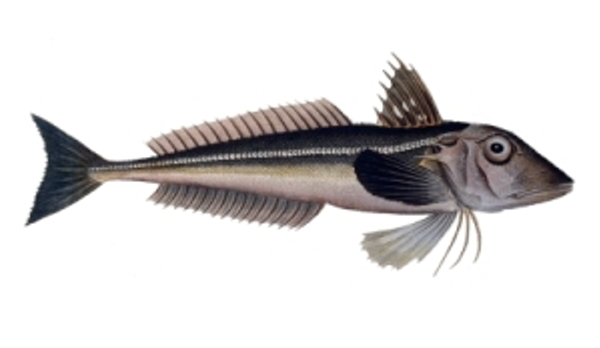
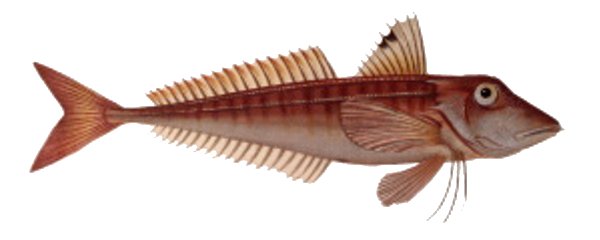
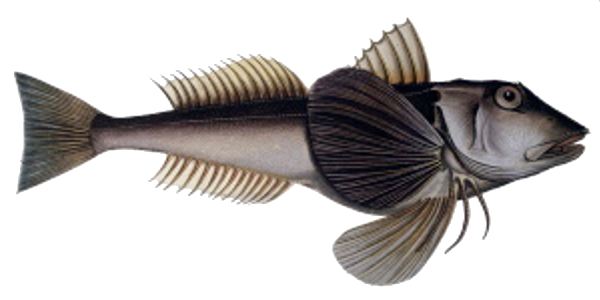
In the last twelve or so years, the gurnard’s reputation has changed significantly when celebrity chefs and restaurant reviewers such as Rick Stein, began talking up the gurnard as a food fish.
In the UK this had the result of gurnard going up in value from 25p per kilo to £4 per kilo and sales increasing by 1000% between July 2007 and summer 2008. Gurnard is now an established food fish in the UK, with red gurnard being the variety most likely to end up on plates and menus. In Ireland this fashion has caught on and especially red gurnard can be enjoyed in many places and many ways.
Although bony, this fish is very delicious with firm pinkish/white fillets that hold their shape when cooked and therefore pan fries and grills well. It takes strong flavours and is low in oil content. Being rich in potassium and calcium gurnard is a very healthy seafood choice.
In Ireland, the red gurnard is referred to as piper in the southern part of the country while the grey gurnard is called the cuckoo fish, knoud, or noud. The fish is known as the grondin rouge in France and the Dutch called it Engelse soldaat, no doubt a reference of the redcoats they battled against in previous times. Other, and sometimes rather odd, colloquial names are sea-robin, feeler-fish, red fish, soldier, elleck rotchet and croaker. In most languages, its name refers to the dominantly red colour e.g. Roter Knurrhahn in German or rødknurr in Norwegia. In Irish all gurnards are called Crúdán or Cnúdán.
In the olden days East-Atlantic countries would have souse fried gurnard fillets in vinegar to preserve them this way. This was a popular dish, especially with the Dutch. Some French chefs still do it today. The habit has died in England, however, perhaps discouraged by Shakespeare, who implied an adverse judgment on the dish when he made one of his characters (Falstaff) say: ‘If I be not ashamed of my soldiers, I am a soused gurnet.’
Ecology of the Gurnard
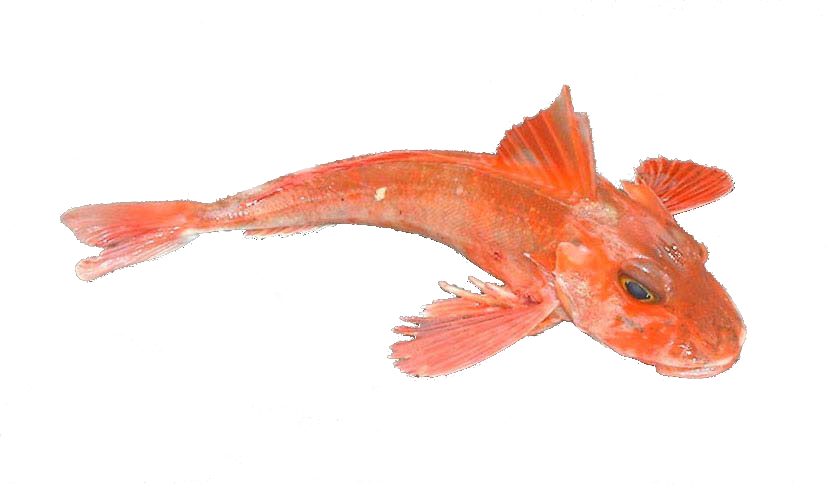
The gurnard belongs to the group of fish collectively known as Triglidae. It is a very distinctive bottom-living fish evident by its large heads and eyes. Gurnards occur anywhere between 15 and 400 m on the continental shelf, most commonly between 30 and 250 m where they live over sand, gravel, shingle or rocky sea-beds. As opportunistic predators they hunt anything from sprats, sand eels, small mackerel and herring to bottom-dwelling invertebrates, such as crustaceans and marine worms. They even scavenge on dead fish. As gurnards are visual hunters they feed best during daylight.
There are three gurnard species that are common in and around the British Isles and Ireland: The grey gurnard (Eutrigla gurnardus), the red gurnard (Chelidonichthys cuculus), and the tub or yellow gurnard (Chelidonichthys lucerna). They all look very similar with a tapering cylindrical body and large triangular dorsal fin and long second dorsal and anal fins. Heavily protected by large bony plates and strong spines, especially around their big heads they look like they are ready for battle. The lower three rays of the pectoral fins have developed into separate, finger-like processes that are packed with sensory organs with which the gurnard seems to “walk” while detecting prey in the sediment.
A "walking" gurnard
It is believed that the fish will flare its brightly coloured pectoral fins as a display or to startle potential predators.
They are also capable of making sounds using drumming muscles that are beaten against the gas bladder. In fact, their name comes from the old French word ‘gornard’ meaning ‘grunter’ or to ‘grunt’. Recent studies have shown that these ‘grunts’ vary greatly and are used for communication and not just as a defence mechanism or during mating season.
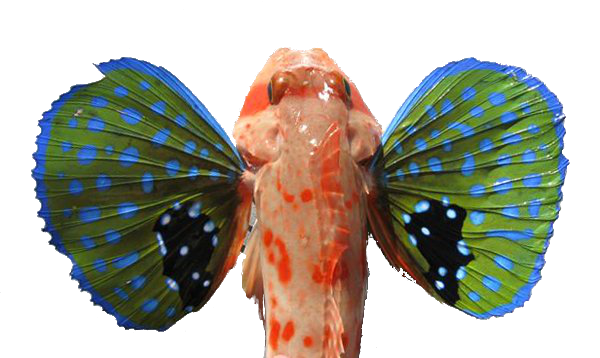
The most colourful gurnard when alive is the tub or yellow gurnard. Its body is often yellow, orange or red and the pectoral fins are bright red with peacock-blue and green spots and edges.
In our curry recipe we use the red gurnard (Chelidonichthys cuculus) which is the most popular table fish in and around Ireland, but the recipe will work as well with any of the other two.
Focusing on the red gurnard, with its stout body, large head and eyes and moderately large scales, it is smaller in size than its yellow cousin and bigger than its grey cousin reaching a maximum length of 50 cm (avg. 30cm). The colouration is bright red often with pinkish-silver mottling on the sides and head. The protective bony plates on the head, characteristic of all gurnards, are very conspicuous in this species. Along the lateral line there is a row of large, plate-like scales. The divided dorsal fin has nine spines and seventeen to eighteen soft rays while the anal fin has no spines and sixteen to eighteen soft rays. The whole fish is finely tuned to functionality and dressed for battled with all its spines, barbs and bulletproof helmet.
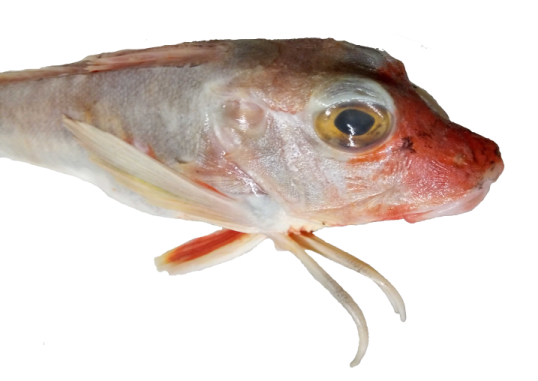
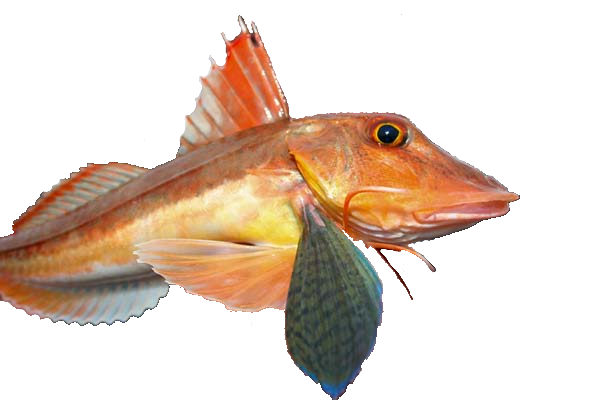
Sometimes, the red can be more of a brownish or even pale colour which can then lead to species confusion with the tub/yellow gurnard, since the latter can sometimes be redder than a red gurnard. It is the food and habitat that determine the gurnard’s colour. For a safe identification, the pectoral fins are the best way of identifying this species – if the blue fringe is present on these fins it is a tub/yellow gurnard, if no blue is present you got yourself a red gurnard.
The red gurnard is native to the temperate eastern Atlantic Ocean and the Mediterranean Sea. Its ranges from southern Norway and Sweden southwards to the British Isles, France, Spain, Madeira, the Azores and the coast of Africa as far south as Mauritania. It is also present in the Mediterranean Sea and possibly the Black Sea.
Red gurnards are fast growing fish living to an average age of 12 years while sexual maturity is reached at the age of 2-3 years when they are around 24 cm (from the nose to the fork in the tail). This is why gurnards are often considered a sustainable fish choice. After 2 -3 years their growth rate slows and they gradually reach a length of around 25 – 50cm.
Females tend to grow faster and larger than males, but growth also varies by location and food availability. These Triglidae occasionally form schools and spawn through spring and summer, peaking in early summer. Their spawning grounds are thought to be extremely widespread and the egg and larval development occurs in surface waters with egg development of around 7 days.

